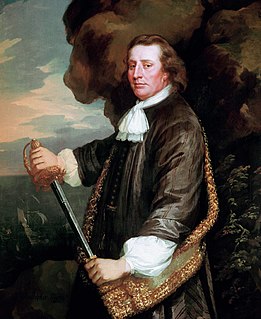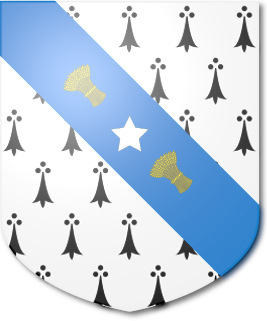Related Research Articles

Buccaneers were a kind of privateers or free sailors particular to the Caribbean Sea during the 17th and 18th centuries. First established on northern Hispaniola as early as 1625, their heyday was from the Restoration in 1660 until about 1688, during a time when governments were not strong enough and did not consistently attempt to suppress them.

Sir Henry Morgan was a Welsh privateer, plantation owner, and later, Lieutenant Governor of Jamaica. From his base in Port Royal, Jamaica, he raided settlements and shipping on the Spanish Main, becoming wealthy as he did so. With the prize money from the raids, he purchased three large sugar plantations on the island.

The Anglo-Spanish War was a conflict between the English Protectorate under Oliver Cromwell, and Spain, between 1654 and 1660. It was caused by commercial rivalry. Each side attacked the other's commercial and colonial interests in various ways such as privateering and naval expeditions. In 1655, an English amphibious expedition invaded Spanish territory in the Caribbean. In 1657, England formed an alliance with France, merging the Anglo–Spanish war with the larger Franco-Spanish War resulting in major land actions that took place in the Spanish Netherlands.
The Treaty of Madrid, also known as the Godolphin Treaty, was a treaty between England and Spain that was agreed to in July 1670 "for the settlement of all disputes in America". The treaty officially ended the war begun in 1654 in the Caribbean in which England had conquered Jamaica.

Vice Admiral Sir Christopher Myngs was an English naval officer and privateer. He came of a Norfolk family and was a relative of Admiral Sir Cloudesley Shovell. Samuel Pepys' story of Myngs' humble birth, in explanation of his popularity, has now been evaluated by historians as to be mostly fictitious in nature.

Robert Searle was one of the earliest and most active of the English buccaneers on Jamaica.
David Marteen was a Dutch privateer and pirate best known for joining Henry Morgan’s raids against Spanish strongholds in present-day Mexico and Nicaragua. He is also the subject of a popular buried treasure legend.
John Morris was an English buccaneer active in the Caribbean during the 1660s and early-1670s. His son, John Morris the Younger, held a command of his own ship during his father's later expeditions against Portobelo and Maracaibo. John Morris the Younger was one of the commanders killed in an explosion during a party on-board Henry Morgan's flagship in 1670.
This timeline of the history of piracy in the 1670s is a chronological list of key events involving pirates between 1670 and 1679.
Laurens Prins, anglicized as Lawrence Prince, was a 17th-century Dutch buccaneer, privateer and an officer under Captain Sir Henry Morgan. He and Major John Morris led one of the columns against Panama in 1671.

Edward Mansvelt or Mansfield was a 17th-century Dutch corsair and buccaneer who, at one time, was acknowledged as an informal chieftain of the "Brethren of the Coast". He was the first to organise large scale raids against Spanish settlements, tactics which would be utilised to attack Spanish strongholds by later buccaneers in future years, and held considerable influence in Tortuga and Port Royal. He was widely considered one of the finest buccaneers of his day and, following his death, his position was assumed by his protégé and vice-admiral, Henry Morgan.
Sir Thomas Lynch was the English governor of Jamaica on three separate occasions in the 17th century. He was also chief justice of Jamaica for a time.
Sir William Beeston was an English political and legal figure, lieutenant-governor of Jamaica.
Jelles de Lecat was a Dutch pirate and buccaneer who sailed for and against both the English and Spanish. He served with Henry Morgan and was often called "Yellahs," "Yallahs," or “Captain Yellows.”
Francis Witherborn was an English buccaneer, privateer, and pirate active in the Caribbean. He is best known for his brief association with Henry Morgan.
Thomas Freeman was an English buccaneer and pirate active in the Caribbean. He is best known for attacking the Spanish alongside Henry Morgan, David Marteen, and John Morris.
Jacob Fackman was an English buccaneer and pirate active in the Caribbean. He is best known for attacking the Spanish alongside Henry Morgan, John Morris, and David Marteen.
Edward Dempster was a buccaneer and privateer active in the Caribbean. He is best known for his association with Henry Morgan.
Edward Neville was an English buccaneer and pirate. He is best known for joining George Spurre to raid Spanish Campeche.

Sir James Modyford, 1st Baronet (1618–1673) was an English merchant, colonial agent, and deputy-governor of Jamaica.
References
- ↑ Cruikshank 1935, p. 51.
- ↑ Sainsbury 1880, pp. 207–210, 218.
- ↑ Latimer 2009, p. 146.
- ↑ Latimer 2009, p. 148.
- ↑ Pope 1978, p. 344.
- ↑ Goslinga 2012, pp. 38–39.
Books
- Cruikshank, Ernest Alexander (1935). The Life of Sir Henry Morgan, by Brig.-General E. A. Cruikshank. Toronto: Macmillan Company of Canada.
- Latimer, Jon (2009). Buccaneers of the Caribbean: How Piracy Forged an Empire. Cambridge, MA: Harvard University Press. ISBN 978-0-674-03403-7.
- Pope, Dudley (1978) [1977 (in the UK, as Harry Morgan's Way)]. The Buccaneer King: The Biography of the Notorious Sir Henry Morgan 1635–1688 . New York: Dodd, Mead & Co. ISBN 978-0-396-07566-0.
- Goslinga, C. C. (2012). A Short History of the Netherlands Antilles and Surinam. The Hague: Springer. ISBN 9789400992894.
- Sainsbury, W. Noel (1880). Calender of State Papers, Colonial Series, America and West Indies, 1661-1668: Preserved in Her Majesty's Public Record Office. London: Longman.